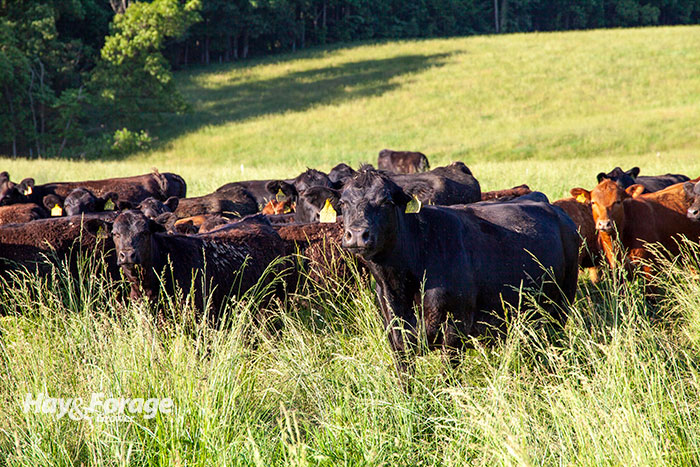Done with KY31 |
| By C.J. Weddle |
|
|
 There is no debate that replacing a Kentucky 31 (KY31) tall fescue stand with a novel, nontoxic fescue variety improves livestock performance. In a recent webinar, Leanne Dillard mentioned two key components to consider before renovating KY31 pastures. The Alabama extension forage specialist said that plants must be actively growing for herbicides to effectively kill existing stands, and she has observed better establishment results from stands planted on or near September 15 as compared to a spring planting date. Depending on your forage needs and the amount of time you have, consider these four strategies to convert a toxic KY31 stand into a more desirable nontoxic fescue pasture. Spray-summer smother-spray Within one growing season, spray herbicide (glyphosate) in late spring, and plant a summer annual such as sorghum-sudangrass or millet to smother any remaining plants and new tillers. At the end of summer, apply a second round of herbicide to kill the summer annual stand, remaining fescue plants, and weeds. Finally, plant novel fescue. Spray-winter smother-spray Make the first herbicide application in late summer, then plant a cool-season annual in fall for the following spring. Leave the pasture fallow during summer months. Dillard noted that small grain cereals as the smother crop perform best with this method. Spray herbicide a second time in late spring and a third time in late summer, then plant the novel fescue in the fall. Spray-wait-spray In late spring, after a clipping or grazing, spray the actively growing stand of KY31, wait six or seven weeks, and spray again to kill any escape tillers, weeds, and other volunteer plants. Plant novel fescue after the second spraying. “This method is not as effective, but it is less expensive and quicker,” said Dillard. Prepare a seedbed Farmers choosing to prepare a seedbed will still need to apply herbicide to terminate the KY31. During summer, the pasture should be sprayed, tilled, and sprayed again. This process may need to be repeated closer to fall depending on the regrowth of the KY31. Plant the novel fescue in the fall. This method is not recommended for fields prone to erosion. Mitigate stand failures Sometimes, stands still fail. Conditions like adequate soil moisture are out of a farmer’s control, but planting in the fall can reduce this risk. Factors that farmers can control include: • Ensuring a good kill • Checking for possible herbicide carry-over • Using quality seed • Setting the correct planting depth • Reducing plant competition • Ensuring adequate soil fertility To eliminate many risks that are involved with stand failures, check to see that your herbicide is approved for use during an establishment year, apply it when plants are actively growing, buy certified seed, do not introduce legumes until at least the second year, and complete a soil analysis prior to establishing novel fescue. Manage for persistence Even with proper preparation, a stand of novel fescue still must be well-managed to maximize longevity. During the establishment year, consider making hay instead of grazing the pasture. If grazing is necessary, do so cautiously. Reduce the chance of KY31 contamination by allowing cattle to fully digest and pass any other forage seed before entering the newly established novel fescue pasture. Also, be mindful of stocking rates and overgrazing. After the establishment year, regularly rotate livestock at least every two to four weeks, depending on the pasture size. In pastures where KY31 and novel fescue are both available, cattle will self-limit intake of KY31 and overgraze the novel fescue. The benefits will eventually outweigh the costs of pasture renovations. “Generally, it takes three to five years to recover the costs of renovating tall fescue pastures,” Dillard noted. Renovation inputs — herbicides, smother crops, novel fescue seed, and additional livestock feed — lead to improved weaning and breeding weights while reducing the need for other inputs. Like any other overhaul on your farm, it’s not a practical or economic choice to renovate all toxic tall fescue pastures at the same time. Start with stands that already need attention and continue to renovate up to 25% or 50% of your acreage at a time to reduce economic risk.  C.J. Weddle C.J. Weddle is serving as the 2020 Hay & Forage Grower editorial intern. She currently attends Mississippi State University, majoring in agricultural education, leadership, and communications. She grew up on a farm in Vardaman, Miss., where her family raises sweet potatoes and soybeans. |
